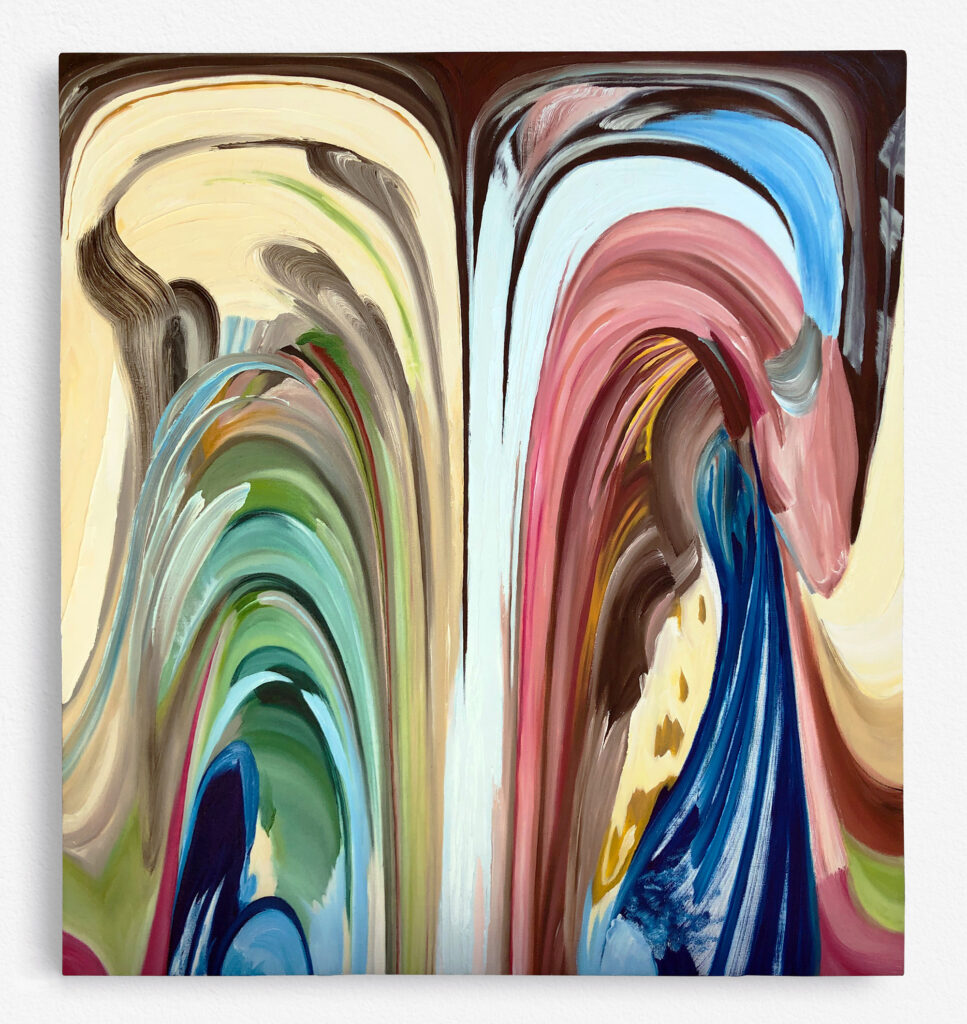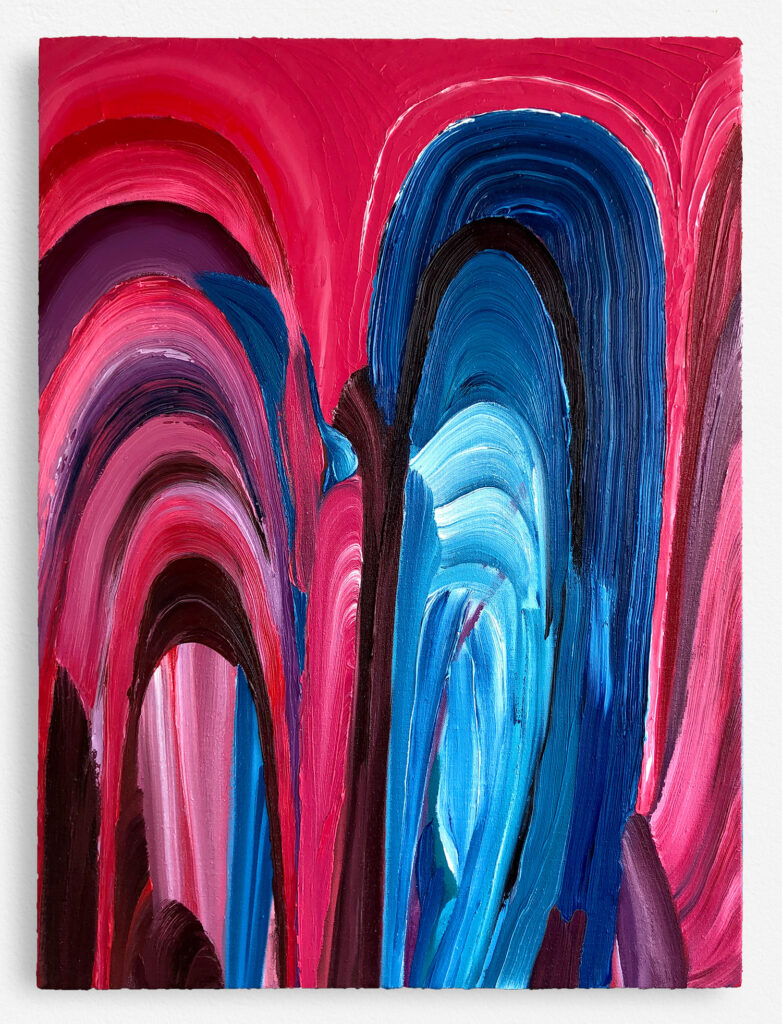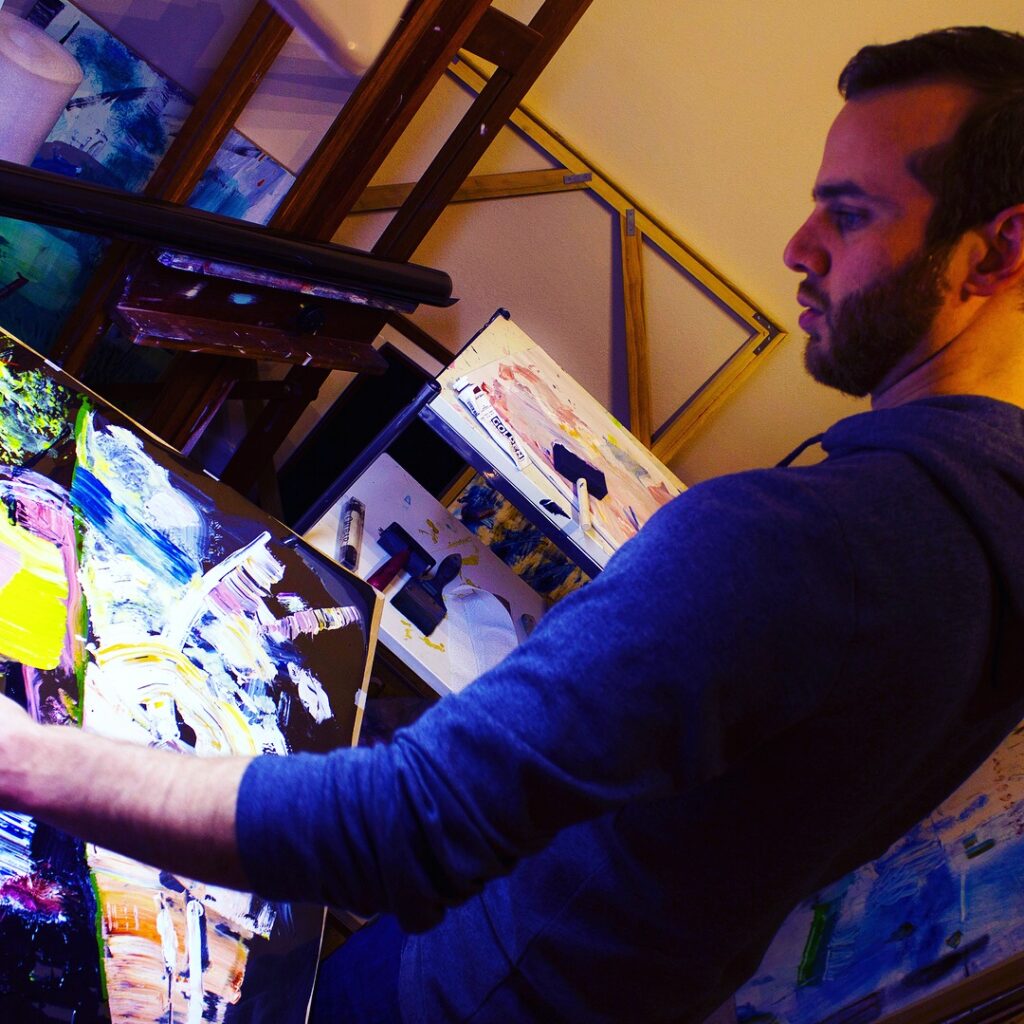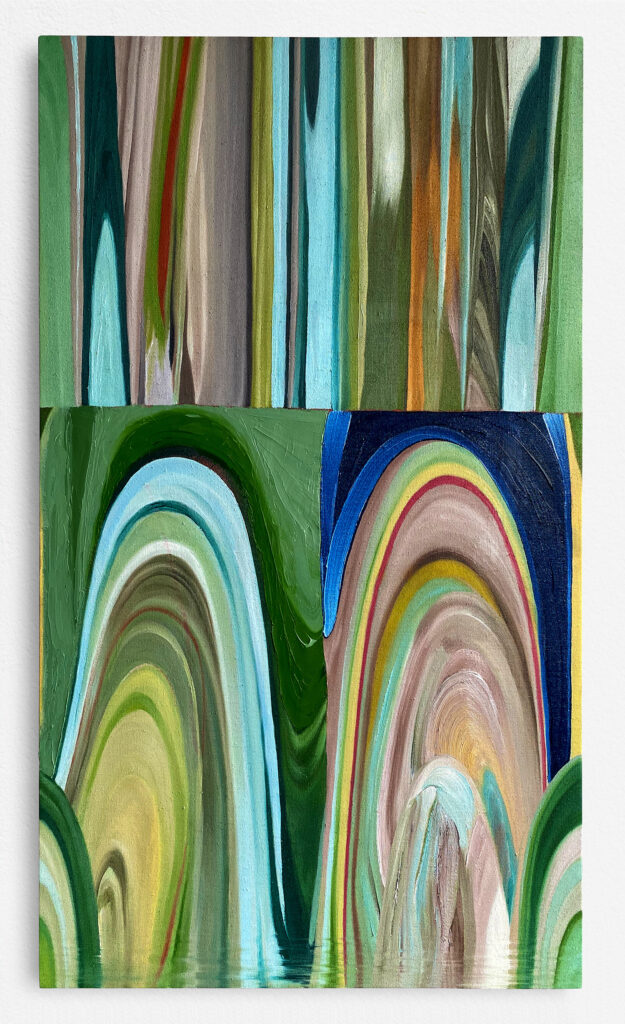Profile of the Week: Benjamin Adelmann

LA-based artist Benjamin Adelmann underlays his artwork with philosophical purpose. With a rich academic background including a BA in philosophy, he has been painting for 12 years, and likes to combine mediums to create different conversations. Benjamin’s work is a treat for the eyes and food for the brain, and he hopes to keep making art that is worthwhile.
We connected with Benjamin on FRONTRUNNER’s online forum, to talk about his latest series: “Warped”, which is concerned with re-contextualizing the ordinary to incite new ways of perceiving.
When did you start your art practice?
About 12 years ago I began painting in oils and doing larger projects. I received a BA in philosophy in college, then studied some engineering, business, and finally art again. It’s all been necessary.
How do you describe your vision for your work?
A perfunctory action of necessity. If it isn’t functional as a philosophical switchboard, making connections that light up insights, then I don’t want to do it. It needs purpose in its making that aligns with its outcome- something that is understood, ideally, on a number of different interconnected levels. This kind of requirement for a series will inevitably lead me to a lot of lasting energy for the work. I feel that I need to try and reach for this kind of rigor in thought, and in epistemological inquiry. I feel it internally as a personal development project, and externally as an ongoing investigation which if continued, will lead to more and more discovery about where we’re all going, who we all are and what we really can and cannot know.
How has your work evolved over time?
I think each series has jutted out in different ways, but there’s strong threads. I like to try new things, and what I’ve found for me is that new mediums offer new ways of thinking. When I combine different types of media with novel ways of making, it brings new conversations to the table. I also like to bring forward older work and assess them in a kind of “metacognitive” way (the study of one’s own thought processes). Recently I took an older series of work and used that as the basis imagery for new work in my Warped series. It was very odd to reconstruct older work in a different way like this, I felt like I was seeing the work for the first time, or from a different dimension.

Oil and barite on linen
35 x 26
What are your artistic/creative aspirations?
I’ll keep making art, meaning that I need to keep finding what’s important and worthwhile. I know that I can do it, I’ve done it for a good while now. So far as seeing ahead, beyond what I’ve made- I don’t know if that’s possible for anyone, other than a sliver into the future. I truly believe that “doing” is the only way forward and the real act of what we might call vision, versus conceiving of things and deliberating. With regards to my art career and CV related events- If I’m accepted, invited, or called upon, then it’s an honor. If not, I keep making art. I don’t have a time scale or deadline for art career related accomplishment, just for art accomplishment. I find so much richness in a blank canvas or piece of paper, it’s always brought me a kind of deep and important excitement.

Tell me about your process.
Here’s a synopsis that I wrote that I think best relates what I do in the “Warped” series- having taken images from a prior series of work entitled “Terrain” which I painted while living in Japan. The Warped paintings are an iterative reprocessing system, abstracting further into their own imagery over and over again, from one canvas to another. In-between the iterations is a control point that distorts the work into a different evolution. The distortion is done digitally, from an image of the prior work, and I use it loosely as reference to physically paint the next one. Each work then carries the “inheritance” of the previous painting, from my hand and from the digital distortion. The distortion takes the image and totally reconfigures it, keeping the work from fragmenting but pulling and stretching it in a distinct way- a form that has been put through a filter (or more like a meat grinder). As I physically paint this next derivative work, the final outcome is an abstraction of an abstraction and a kind of test of proof between the original piece and the “retranslation”. The finished painting informs me about my own initial work (in a unique state of bias) and talks in an existential manner about what can be known, what can be interpreted, and how. Then I create the next iteration and repeat, pulling each work into a singular train of discovery. Physically speaking, the warped reference imagery is both a guide and a constraint- requiring at times the use of very large brushes and forceful mark making techniques. The result falls in-between the painter’s hand and the demands made by the digital distortion.

Oil and barite on linen
39 x 26
Do you think your work has a message? How is it received?
One way of understanding the conversations within my work, would be to say that the message is the symbolizer of what is perceived and reprocessed and perceived again- how we can make use of or completely obliterate our own daily experiences. Sometimes each day, the ordinary happens, sometimes the extraordinary. What’s the difference? I saw a bald eagle fly past my car the other day, it was the first time I experienced this. It was extraordinary, it was new. If it happened again and again, would I then categorize this event as ordinary, “unimpressive”? If I see a beautiful tree, but am used to beautiful trees, do I relegate this experience into nonsense and never bother to contemplate it? I want to re-assess what it is most of us have let slide off our perceptual table, because I think being human can too often mean dropping interest from everything that is considered ordinary.
What is safe and/or dangerous in terms of experimentation?
I do think that if an artist isn’t educated- doesn’t do their historical homework, that they can work on something that’s been discussed and cracked open already, in the same way. This doesn’t mean that their work is purposeless, but it can mean that it is less pertinent to the present moment. Dangerous experimentation honestly sounds like something I’d be attracted to- what makes for dangerous thinking? Stepping outside of ideology, into a territory that is very lonesome, is the best thing an artist can do. To reach for original thought (thought that is not wrote, dependent on quotes, motivations from large movements, or societal pressures). Is what the artist should be all about.

Oil and barite on linen
24 x 42
Where would you like to see your work in 3 years? What goals do you have for your practice?
More work accomplished, some work destroyed, new mediums and experiments learned. Also, I like to read philosophy and history a lot (also sci fi!) and I think these help me think about things that I didn’t consider before. So I’d like to have accomplished more study, more writing. I travel a lot, and this also brings me life that can transfer into the creative process. So far as series of work goes, the evolution of it into the future- I like to keep it open.
Are there other emerging artists you can recommend?
Yes absolutely, in random order off the top of my head- Yang Tsung Fan, Kouji Ohno, JJ Cromer, Matia Barbieri, Morgan Blair, Anne Vieux, Ilana Zweschi, Claire Sherman.
FRONTRUNNER online forum: @badelmann
Website: benjaminadelmann.com
Instagram: @benjaminadelmann









Responses